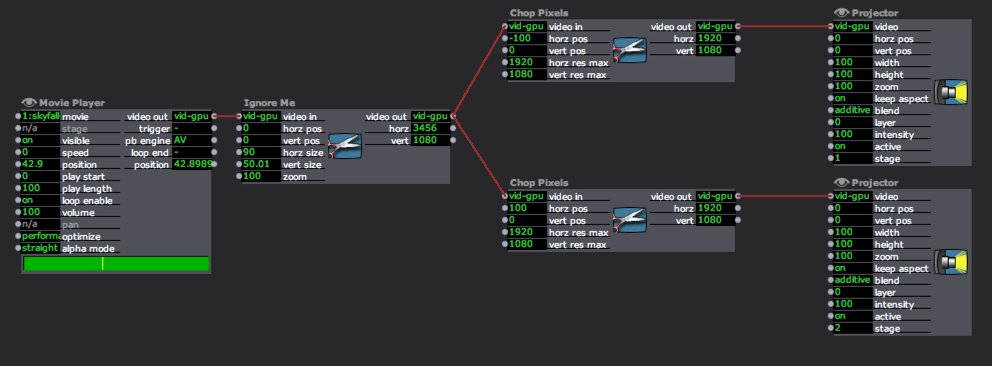

Looking closer we can see that it’s a gradient of green in the top left corner, and red in the bottom right corner. Our second output is a 32 bit texture made up of only red and green channels. Well hello there, what is this all about?! Let’s plug in a null to both outlets and see what we’re getting. We can see now that there’s a second outlet on our op. Let’s start by taking a closer look at the stoner itself. But what if there was a way to get almost the same results at a cost of 0 milliseconds for photos, and only 0.05 milliseconds when working with video? As it turns out, there’s a gem of a feature in the stoner that allows us to get just this kind of performance, and we’re going to take a look at how that works as well as how to take advantage of that feature. That’s not bad, in fact that’s a downright snappy in the scheme of things, but it’s going to have limitations when it comes to scale, and using multiple stoners at the same time. The major catch is that using the tox as is runs you about 0.2 milliseconds when we’re not looking at the UI, and about 0.5 milliseconds when we are looking at the UI. You can bump points with the keyboard, you can use the mouse to scroll around, there are options for linear curves, bezier curves, persepective mapping, and bilinear mapping. It allows for key stoning and grid warping, with a healthy set of elements that make for fast and easy alterations to a given grid. If you’ve never used the stoner it’s a killer tool for all your grid warping needs. Tucked away at the bottom of the tools list is the stoner. If you’re unfamiliar with this feature, it’s located on the left hand side of the interface when you open touch, and you can quickly summon it into existence with the small drawer and arrow icon: In this installation we don’t do any overlapping projection, so edge blending isn’t a part of what we’ll be talking about in this case studyĪs many of you have already found there’s a wealth of interesting examples and useful tools tucked away in the palette in touch designer.

In this case we’ll be looking at a five sided room that uses five projectors.

We’ll focus on looking at the calibration portion of this project, and while that’s not very sexy, it’s something I frequently set up gig after gig – how you get your projection matched to your architecture can be tricky, and if you can take the time to build something reusable it’s well worth the time and effort. Here’s our second stop in a series about planning out part of a long term installation’s UI.


 0 kommentar(er)
0 kommentar(er)
